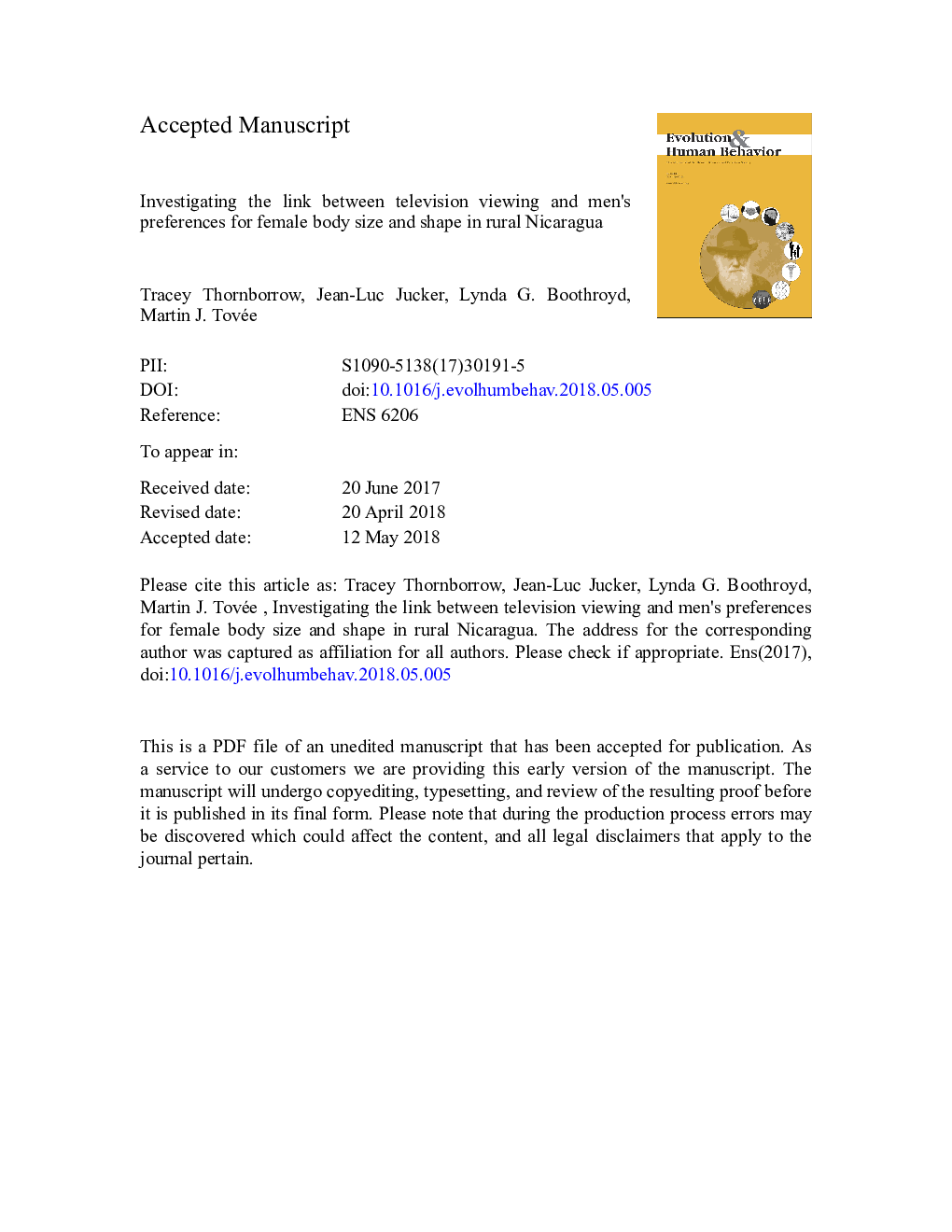| Article ID | Journal | Published Year | Pages | File Type |
|---|---|---|---|---|
| 7316147 | Evolution and Human Behavior | 2018 | 43 Pages |
Abstract
The different levels of media access in otherwise very similar villages in rural Nicaragua provided a natural laboratory to explore the effect of television (TV) access on men's preferences for female body size and shape. In study 1 we compared the female body ideals of men from three discrete villages who experienced different levels of TV but otherwise inhabited a similar ecological and sociocultural environment. 3D modelling software enabled participants to create their ideal female body with more precision than simply choosing a figure from a limited range of 2D images. In study 2 we further explored local men's perceptions of female physical attractiveness and attitudes towards television using focus group discussions. Results from study 1 showed that men in the high TV villages preferred significantly slimmer bodies compared to those in the low TV village. Regression analyses showed TV access to be a significant predictor of ideal body size and upper body shape, but not of ideal lower body shape. The central theme to emerge from study 2 was the importance of the relationship between lower body shape, movement, and sex in the men's judgments of female attractiveness: the curvaceous body was perceived by the men to be a reliable cue to potential sexual promise, rather than valued simply for its visual aesthetic. Overall, findings suggest that TV access is linked to rural Nicaraguan men's perceptions of ideal female body weight and breast size, but preferences for a curvaceous lower body shape may be driven primarily by judgments of female sexual promise.
Related Topics
Life Sciences
Agricultural and Biological Sciences
Ecology, Evolution, Behavior and Systematics
Authors
Tracey Thornborrow, Jean-Luc Jucker, Lynda G. Boothroyd, Martin J. Tovée,
